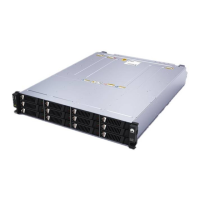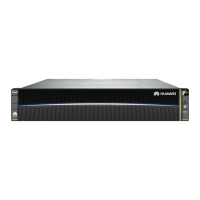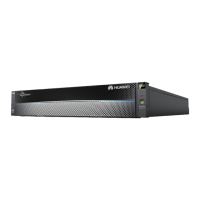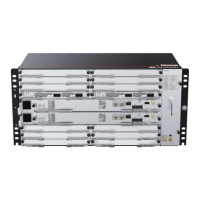N2000H V3 Appliance
User Guide
4 Configuring the N2000H V3
Huawei Proprietary and Confidential
Copyright © Huawei Technologies Co., Ltd.
Select by volume enables you to specify the volume you want to share. In this mode, the
system automatically creates a shares folder in the root path on the specified volume and
uses shares as the shared folder.
Type a custom path enables you to specify the folder you want to share. In this mode,
you can create shared folders for different users or departments based on the actual
service plan. Therefore, you are advised to adopt the Type a custom path mode.
You are advised to name an NFS shared folder in English to ensure compatibility with Linux operating
systems.
2. Click Type a custom path and then click Browse.
3. Based on the actual service plan, select the desired folder from a specific volume to share.
If the folder you want to share is not created, click New Folder to create a folder. For
example, you can create shares on Local Volume(D:).
4. Select shares and click Select Folder. Then, click Next.
Step 5 The default data is automatically generated on the Share Name page. Click Next.
Step 6 On the Authentication page, select all check boxes in the Keberos v5 authentication area.
In addition, select No server authentication and Enable unmapped user access. Then, click
Next.
Step 7 Set share permission.
If you need to set share permission for multiple clients, perform the following steps for each of the
clients.
1. Click Add. The Add Permissions windows is displayed.
2. Set Host to the IP address of the client that you want to allow to access the NFS share.
3. Keep the default setting of Language encoding.
4. Select a desired persimmon level from the Share permissions drop-down list for the
client.
5. Click Add. Then, click Next.
Step 8 Set NFS permission.
1. The default user group permission is listed on the Permissions page. If you want to set
permission for a user separately, click Customize permissions.
2. By default, the Permissions tab page is selected. Click Add and select Select a
principal.
3. On the Select User or Group page, click Locations.
4. In the Locations window, select a server name, for example, RH2285-121.
5. In the Enter the object name to select area, enter the name of a local user, for example,
department1-user.
6. Set Type to Allow.
7. Select the range to which the share permission applied from the Applies to drop-down
list.
8. Set Basic permissions for the user. By default, Read & execute, List folder contents,
and Change are selected.
9. Click OK.
10. Click Next. The Management Properties page is displayed.

